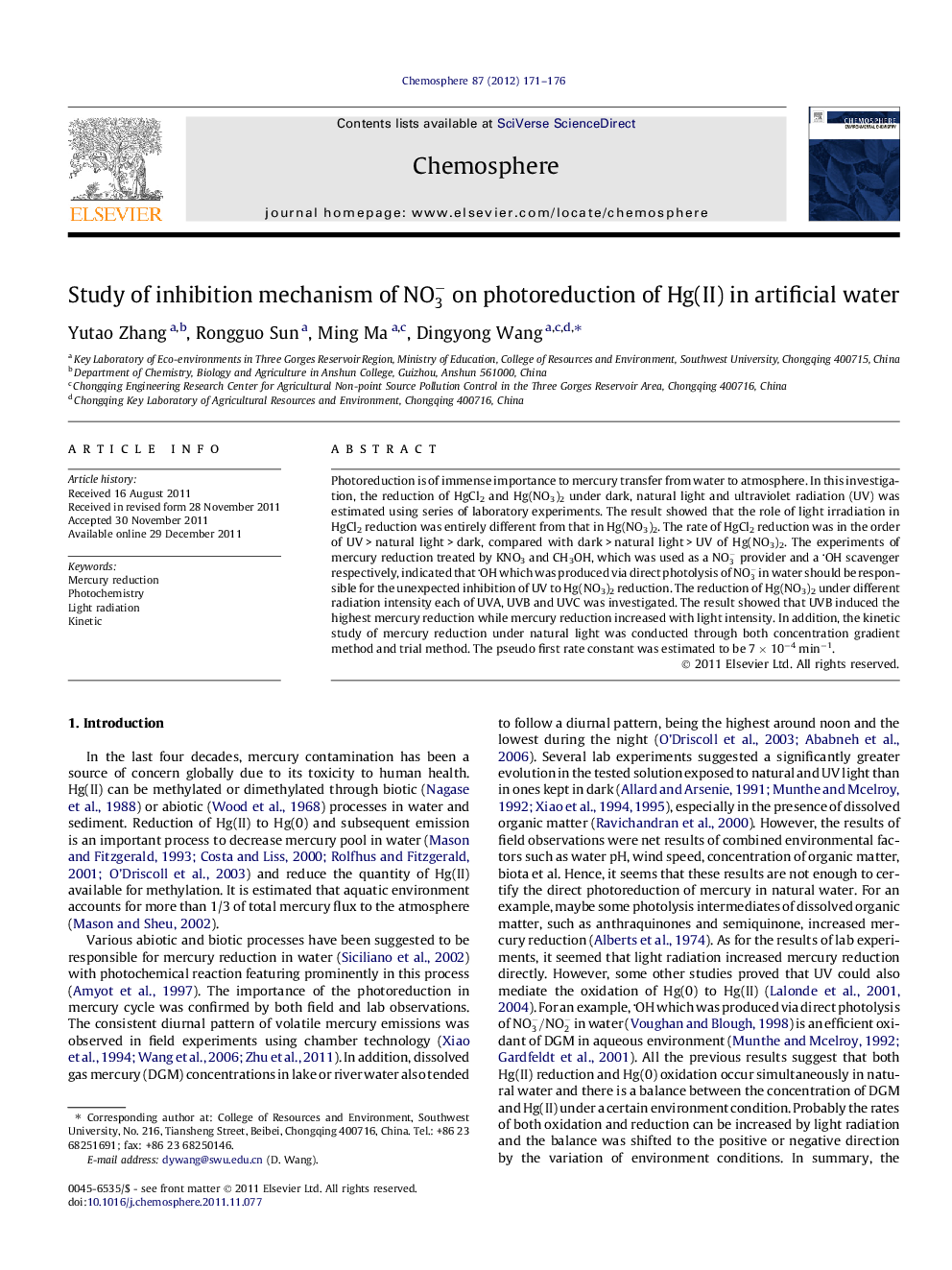| Article ID | Journal | Published Year | Pages | File Type |
|---|---|---|---|---|
| 4409992 | Chemosphere | 2012 | 6 Pages |
Photoreduction is of immense importance to mercury transfer from water to atmosphere. In this investigation, the reduction of HgCl2 and Hg(NO3)2 under dark, natural light and ultraviolet radiation (UV) was estimated using series of laboratory experiments. The result showed that the role of light irradiation in HgCl2 reduction was entirely different from that in Hg(NO3)2. The rate of HgCl2 reduction was in the order of UV > natural light > dark, compared with dark > natural light > UV of Hg(NO3)2. The experiments of mercury reduction treated by KNO3 and CH3OH, which was used as a NO3- provider and a OH scavenger respectively, indicated that OH which was produced via direct photolysis of NO3- in water should be responsible for the unexpected inhibition of UV to Hg(NO3)2 reduction. The reduction of Hg(NO3)2 under different radiation intensity each of UVA, UVB and UVC was investigated. The result showed that UVB induced the highest mercury reduction while mercury reduction increased with light intensity. In addition, the kinetic study of mercury reduction under natural light was conducted through both concentration gradient method and trial method. The pseudo first rate constant was estimated to be 7 × 10−4 min−1.
► The reduction of Hg(NO3)2 and HgCl2 under different light conditions was estimated. ► One hypothesis about the inhibition of UV on Hg(NO3)2 reduction was certified. ► The pseudo first order rate constant for Hg(NO3)2 reduction was calculated.
